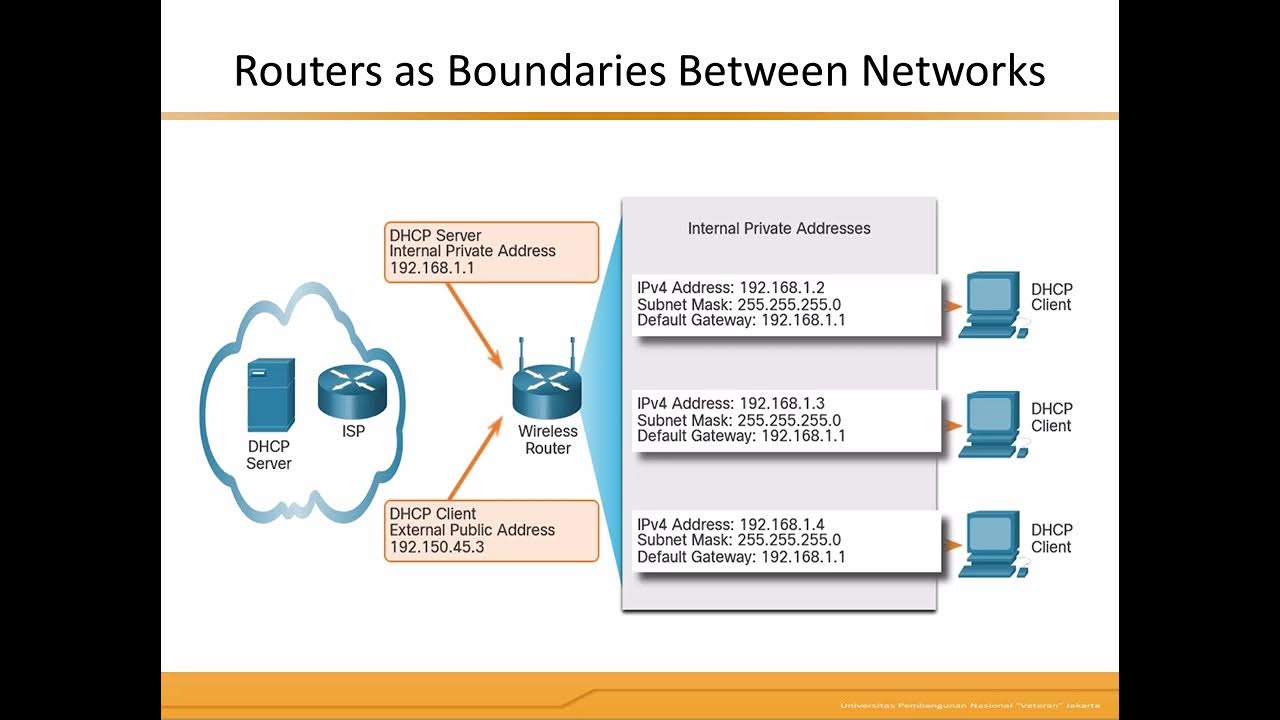Network Devices - Hosts, IP Addresses, Networks - Networking Fundamentals - Lesson 1a
Summary
TLDRThis introductory lesson on networking fundamentals explores the concept of hosts, which include any device that sends or receives internet traffic. It delves into the roles of clients and servers, the necessity of IP addresses for communication, and the hierarchical nature of IP addressing. The lesson also introduces networks as logical groupings of related hosts with similar connectivity needs, highlighting how networks can contain sub-networks and ultimately connect to the internet, forming a vast interconnected system.
Takeaways
- 🌐 The Internet is a network of interconnected networks, facilitating data flow between various devices.
- 📱 A host is any device that sends or receives traffic, including traditional devices like computers and phones, as well as IoT devices like smart TVs and refrigerators.
- 🔄 Hosts are categorized as clients, which initiate requests, or servers, which respond to requests, with these roles being relative to the communication occurring.
- 💻 A server is essentially a computer with specific software that can respond to requests, and any device can be turned into a server with the right software.
- 🆔 IP addresses serve as the unique identity for each host on the internet, akin to a phone number or mailing address, and are essential for communication.
- 🔢 An IP address is a 32-bit number, typically represented in a dotted decimal format, with each octet ranging from 0 to 255.
- 📊 IP addresses are organized hierarchically, allowing for the identification of a host's location within a network structure, such as an office or team within a company.
- 🏢 Subnetting is the process of dividing a network into smaller segments, which can help in organizing and managing IP addresses within larger networks.
- 🔗 A network is a logical grouping of hosts that require similar connectivity, such as devices within a home or a classroom.
- 🌟 The Internet Service Providers (ISPs) play a key role in connecting different networks to the internet, forming the backbone of internet connectivity.
- 📚 Understanding the concepts of hosts, clients and servers, IP addresses, and networks is fundamental to grasping how data communication works on the internet.
Q & A
What is the primary focus of the first module of the networking fundamentals course?
-The primary focus of the first module is to explore how data flows through the internet and to understand the various devices involved in this process.
What is a host in the context of networking?
-A host is any device that sends or receives traffic over the internet, such as computers, laptops, phones, printers, servers, and even cloud resources and IoT devices.
What are the two main categories that hosts typically fall into?
-Hosts typically fall into one of two categories: clients, which initiate requests, and servers, which respond to requests.
Can a server also act as a client in certain communication scenarios?
-Yes, a server can act as a client when it needs to make a request to another server, such as a file server or an update server, to receive files or updates.
What is the purpose of an IP address in networking?
-An IP address serves as the unique identity of a host, allowing it to communicate on the internet by sending and receiving packets.
How is an IP address structured in terms of binary and decimal representation?
-An IP address is a 32-bit number, structured into four octets, with each octet converted into a decimal number ranging from 0 to 255.
What is the concept of subnetting in the context of IP addresses?
-Subnetting is the process of dividing an IP address space into smaller segments, allowing for the hierarchical assignment of IP addresses to different parts of an organization or network.
What is a network in the simplest form?
-In its simplest form, a network is a connection between two or more hosts that allows for the transportation of traffic between them.
How does the concept of a network relate to the internet?
-The internet is essentially a large collection of interconnected networks, including company networks, school networks, and customer networks, all linked together.
What is the role of Internet Service Providers (ISPs) in the context of the internet?
-ISPs handle the connections between different networks, providing the infrastructure that allows for the interconnection and communication between various networks on the internet.
What is the key takeaway from this lesson on hosts, IP addresses, and networks?
-The key takeaway is understanding the concept of hosts, the distinction between clients and servers, the hierarchical nature of IP addresses, and the idea of a network as a logical grouping of related hosts with similar connectivity needs.
Outlines

This section is available to paid users only. Please upgrade to access this part.
Upgrade NowMindmap

This section is available to paid users only. Please upgrade to access this part.
Upgrade NowKeywords

This section is available to paid users only. Please upgrade to access this part.
Upgrade NowHighlights

This section is available to paid users only. Please upgrade to access this part.
Upgrade NowTranscripts

This section is available to paid users only. Please upgrade to access this part.
Upgrade NowBrowse More Related Video

Everything Hosts do to speak on the Internet - Part 2 - Networking Fundamentals - Lesson 3

Everything Routers do - Part 1 - Networking Fundamentals - Lesson 5

Steve Jobs introduces iPhone in 2007

Hub, Bridge, Switch, Router - Network Devices - Networking Fundamentals - Lesson 1b

Gateways to Other Network

2022 | Resumo da Aula | 1ª Série | Matemática | Aula 10 - Unidades de Medida de Armazenamento de ...
5.0 / 5 (0 votes)